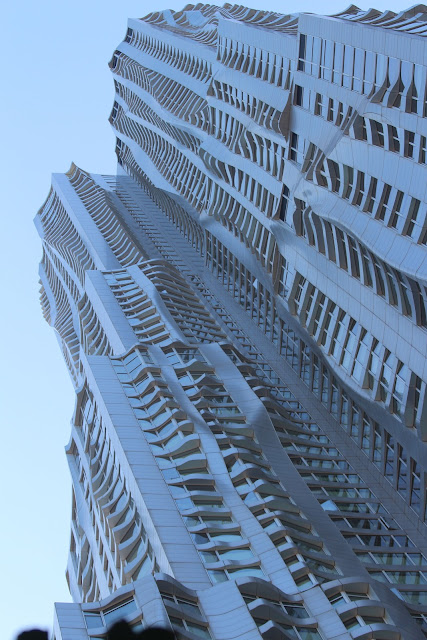
Tonight my daughter Rachel and I begin our 43 day around the world trip to review extraordinary ancient and modern architecture to draw design inspiration for the Trinity Spire monument to American ingenuity we are designing for the 250th anniversary of the United States.
What a fitting place to launch our trip - tonight we went to a large renovated pier in South Boston to celebrate the 10th anniversary of the Roomba robotic vacuum, and the 1500th bomb disposal robot sold by iRobot, both beacons of the kind of ingenuity which makes our country so extraordinary. My friend Amanda Oakleaf (whose wonderful husband Tyler began me on my journey of learning blues guitar a few years back) created the captivating robot cakes you see here using extraordinary cake fondant - Tyler did the engineering to make the robot cakes actually move like robots.
I found it such a privilege to serve as a President at iRobot for several years recently, and to help create and launch the Ava telepresence robot for healthcare. Version 2 of Ava was there as well, getting ready to launch full bore into the hospitsl world. It is a beautiful bot, all grown up and ready for market. Kudos Tom, Clement, and the rest of the team!
Our trip starts in the morning on the following 43 day itinerary: New York, London, Amsterdam and Hoofddorp, Dusseldorf, Frankfurt, Tenerife (Canary Islands - Spanish Territory off Morocco), Bilbao, Elciego, Valencia, Barcelona, Prague, Istanbul, Dubai, Beijing, Shanghai, Siem Reap (Cambodia), Kuala Lampur, Singapore, Tokyo, New York, Boston.
The purpose of the trip is to generate design ideas for Trinity Spire, by studying the great modern and ancient architectural wonders of the world. We will see work by ancients, and by modern architects Frank Gehry, Santiago Calatrava, Renzo Piano, Norman Foster, Cesar Pelli, Adrian Smith, Moshe Safdie, Ned Kahn, and Tadao Ando. We are already collaborating with several of these architects and artists on the project. We will also spend half a week studying the extraordinary architecture of Antoni Gaudi in and around Barcelona.
Our aspiration is to build the defining structure of the twenty-first century for America's 250th anniversary in 2026, a structure which will make a statement about America's hopes, audacity, and leadership for our next 250 years. We start in Lower Manhattan this weekend, where we begin our trip looking at American renewal - the site of the greatest attack on US shores in our history, which occurred in our nation's 225th year, midway between our bicentennial and the year we plan to celebrate by opening Trinity Spire. Near the end of our trip, we spend time in Angkor Wat, a city block sized structure built at the peak of Cambodian civilization in 1100AD, and now overgrown by jungle. As we ponder Americas renewal, and how we can best extend our little experiment in democracy for another two and a half centuries, we expect to reflect at the sight of the jungle overgrown temples of Cambodian civilization and reflect on the distance Cambodian civilization had fallen by the time of our own bicentennial (1976), a time when the Khmer Rouge killed an estimated 25% of the Cambodian population, including nearly all educated people. Renewal, rebirth, and decline... these are big themes. A little scary but inspirational as we search for new ways to inspire the next generation, much as iRobot does through its work.
Off and away...





















